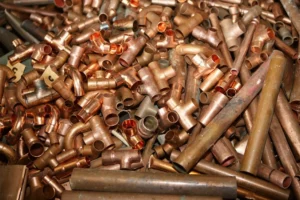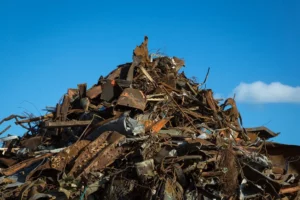With society’s newfound interest in sustainable living and recycling of previously mined resources, there are many newcomers in the field of metal scrapping. Metal that is found in common household appliances, electronics, and infrastructure can represent a valuable commodity these days, which creates profit for many who engage in metal recycling. Scrap metal recycling in Clare, MI, also brings the satisfaction of knowing that you’re doing something that supports sustainability and prevents additional damage to the environment.
For those who are new to metal recycling, metal scrapping can be well worth the effort in terms of additional money earned and contributions to the greater good that are secured through recycling. Keep reading to learn more things you should know about scrap metal recycling.
What Metals Are Recyclable?
Though most metals are recyclable, only a few carry enough value to warrant widescale recycling supported by scrap metal salvage. The primary metals that are valued by salvage operations are aluminum, copper, steel, stainless steel, brass, iron, bronze, and lead. There are other rare earth metals that can be recovered from electronics, but the average salvage yard is more focused on the previous types of metals in most cases.
Where Do You Get Scrap Metal?
 Scrap metal can come from a variety of sources, some of them commercial while others are residential. For example, construction sites are a common source of scrap as metals including copper, steel, iron, and aluminum can commonly be byproducts of construction. Many industrial businesses, such as machine shops, welding operations, and manufacturing facilities, are also a common source of quality scrap metal. Filings, metal shavings, and pieces from cutouts are often of little use to these industries, but they can be converted back into usable metal through recycling. Another common contributor to the scrap metal stream is the auto repair industry, as most auto parts are crafted from metal that can be reprocessed into usable raw materials. Residential scrap can likewise hail from many points of origin such as beverage cans, nonfunctional appliances, aluminum foil, discarded furniture, and damaged electronics.
Scrap metal can come from a variety of sources, some of them commercial while others are residential. For example, construction sites are a common source of scrap as metals including copper, steel, iron, and aluminum can commonly be byproducts of construction. Many industrial businesses, such as machine shops, welding operations, and manufacturing facilities, are also a common source of quality scrap metal. Filings, metal shavings, and pieces from cutouts are often of little use to these industries, but they can be converted back into usable metal through recycling. Another common contributor to the scrap metal stream is the auto repair industry, as most auto parts are crafted from metal that can be reprocessed into usable raw materials. Residential scrap can likewise hail from many points of origin such as beverage cans, nonfunctional appliances, aluminum foil, discarded furniture, and damaged electronics.
How Is Scrap Metal Evaluated?
There are several methods that can be used to determine the type of metal that’s found in a piece of scrap. First, a magnet can be applied to the metal to determine if it’s ferrous or nonferrous. If the magnet sticks, it’s ferrous, which means the metal is either steel or iron. Nonferrous metals include aluminum, copper, stainless steel, brass, bronze, and lead. A magnet won’t stick to those metals. Other tests include the Rockwell test, in which a machine tests the hardness of a metal, or the LIBS test, which involves aiming a pulsed laser at the metal to determine its content. The spark test is sometimes used by those with a trained eye, as the metal is touched with a grinder and the color and length of the resulting spark is evaluated.
How Is Scrap Metal Valued?
 Scrap metal is valued by type, and it’s weighed and priced by the pound. The highest value scrap among common metals is copper, followed by brass, stainless steel, steel, aluminum, and lead. Prices change constantly, however, so it’s a good idea to check scrap metal prices on the day that you plan to sell your scrap. One thing to remember is that it pays to separate your scrap by type. If you toss copper and aluminum in the same barrel, most salvage companies will pay you only for the cost of the least expensive metal in the container.
Scrap metal is valued by type, and it’s weighed and priced by the pound. The highest value scrap among common metals is copper, followed by brass, stainless steel, steel, aluminum, and lead. Prices change constantly, however, so it’s a good idea to check scrap metal prices on the day that you plan to sell your scrap. One thing to remember is that it pays to separate your scrap by type. If you toss copper and aluminum in the same barrel, most salvage companies will pay you only for the cost of the least expensive metal in the container.
If you’re thinking of becoming involved in the scrap industry, there’s plenty to learn if you want to generate maximum profit while helping to protect the environment and provide industry with a renewable source of raw materials. To learn more about scrap metal, contact Fair Salvage Company, a metal recycling yard in Clare, MI, at (989) 386-7552.

